With so many free-to-use strength programs and workouts posted online, powerlifters have never had such an abundance of programs to choose from.
You would think that this would make your training a lot easier. In actuality, however, with so much choice, it can be difficult to even know where to start.
Additionally, there are hundreds of “powerlifting” online programs that really don’t cut the mustard and lead to suboptimal results.
Thankfully, there are also some effective, scientifically-based training programs that you can use to build your strength allowing you to perform at a higher level.
Jonnie Candito Training
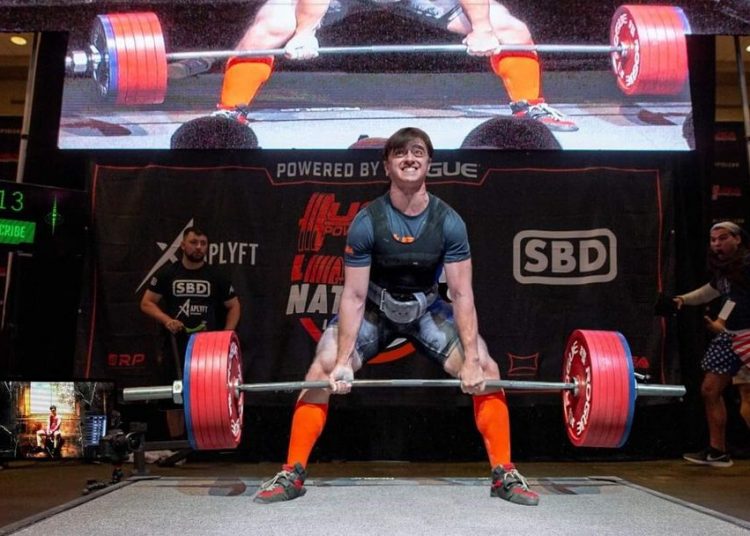

If you know your powerlifting, the name Jonnie Candito will likely be familiar to you.
Candito is not only a very gifted and successful powerlifter, he also coaches and has an excellent online presence.
His website (canditotraininghq.com) provides a range of free and downloadable training programs as well as a section for those interested in online coaching.
Candito offers a range of high-quality powerlifting training programs that are suitable for all abilities, from absolute beginners to advanced lifters.
Furthermore, there are “lift-specific” programs that have been designed with the intention of improving your squat, deadlift, and bench performances.
As well as the website, Candito also currently has over 240,000 subscribers on YouTube and his content has over 40 billion views!
As an experienced powerlifter and coach, he uploads a variety of educational content revolving around exercise techniques, programming, training considerations, and equipment.
An Overview Of Candito Training
Candito created these programs and this online platform to help others gain a “no-nonsense” approach to strength training.
This is encapsulated perfectly by Candito’s slogan… “No gimmicks, just strength”.
A common issue with online training programs is the lack of specificity. The programs are nothing more than a generic “one-size-fits-all” program that doesn’t take into consideration the individual.
There is definitely an element of truth in this.
This is why Candito has created a vast number of different programs in order to cover as many bases as possible and a huge variety of lifters regardless of their abilities and limitations.
This article will break down a number of Candito’s training programs and help you understand which program is most suitable for you and your goals.
Pre-Program Considerations
Before you begin any of the Candito programs, it is imperative that you perform a strength test.
If you are a powerlifting or strength training beginner, you may not be familiar with the one-rep max (1RM) test.
As you may be able to gather from the name, a 1RM is a maximal test of your strength capacity and involves lifting the most weight possible for a single repetition.
Prior to beginning any Candito program, you will need to test your 1RM for the squat, bench, and deadlift.
The reason this test needs to be done is that your 1RM results will be used to calculate the weights to use in each training session.
When selecting a Candito program, you should also consider your current abilities, levels of experience, and goals.
The six-week strength program can be used effectively by beginners and more experienced lifters alike while the LP program is specifically for beginners.
Meanwhile, the single lift plans have been designed for advanced lifters in mind and should not be performed by beginners.
Furthermore, the single lift plans, in particular, need to be performed in line with an upcoming event as the programs are designed to optimize your performance just in time for the competition.
Periodization
Before looking at each program individually, it may be helpful to first understand exactly what periodization is and its benefits.
There is a range of periodized models that can be used to structure training such as linear, block, and daily undulating.
Canditos programs follow periodized training models. The six-week strength and single lift programs use block periodization while the beginner’s program follows linear periodization.
Each training model manipulates intensity, volume, and focus of your training in different ways. Although each model uses slightly different methods, the desired outcome is the same.
The purpose of periodizing training is to cause metabolic fatigue and gradually overload the body in a methodical manner.
This application of stress to the muscles forces them to adapt and increase in both strength and size.
With linear periodization, the idea is to start with a moderate volume and low intensity. As the weeks’ progress, both the volume and intensity increase in a linear fashion.
This approach is particularly beneficial for beginners as it is simple in theory and execution.
Additionally, because the intensity is relatively low to start with, the beginner will have time to get to grips with new exercise techniques before the intensity and volume start to significantly increase.
As the name suggests, with block periodization, training is broken down into several blocks with each having a particular focus and mode of training.
There is ample research to suggest that following structured training models, such as linear and block periodization, can help to optimize your efforts and consequently lead to substantial improvements in strength (1).
Candito 6 Week Strength Program
You can find the full Six Week Strength program below. The document comes with additional information on the program and how it works.
Download 6 Week Strength Program (pdf)
Download the Candito Six Week Strength Program Spreadsheet
Candito 6 Week Program Excel Spreadsheet
As highlighted, the six-week strength program uses block periodization and can consequently be broken down into six distinct phases of one week:
Each phase manipulates training volume and training frequency, therefore, the workouts will differ on a week-by-week basis.
As is to be expected, the workouts in this program revolve around the three powerlifts – the squat, bench press, and deadlift. You will alternate between upper and lower workouts.
Training Blocks
In the first two weeks, “muscular conditioning” and “hypertrophy”, you will begin with a great volume of work. There are five sessions to be performed per week all of which utilize a high number of sets and reps.
Due to the high volume, you will be lifting light to moderate weight in these first two weeks.
Once the conditioning and hypertrophy weeks have been completed, the focus shifts to heavier lifting with the squat, bench, and deadlift – particularly in the third week, “Linear OT”.
As the name suggests, in week four, the focus remains on heavy lifting however with a greater emphasis on developing explosiveness.
To accommodate for the heavier loads in these weeks, training frequency reduces from five to four sessions per week – two lower and two upper workouts.
The program peaks at week five – “Intense Strength Training”. Here, the volumes used in each workout reduces and the frequency drops to just three sessions.
During this week, you will be working at 97.5% of your 1RM, so expect it to be tough!
Week six is intended to be a deload week prior to the competition.
The deload allows the body time to fully recover and adapt from the previous week’s exertions. This week is essential if you want to be in the best condition possible for competition (2).
However, if you are not competing, you have two options.
Either skip this week and use estimated 1RM values to program your next training cycle or use this week to perform 1RM tests for all three lifts.
Exercise Selection
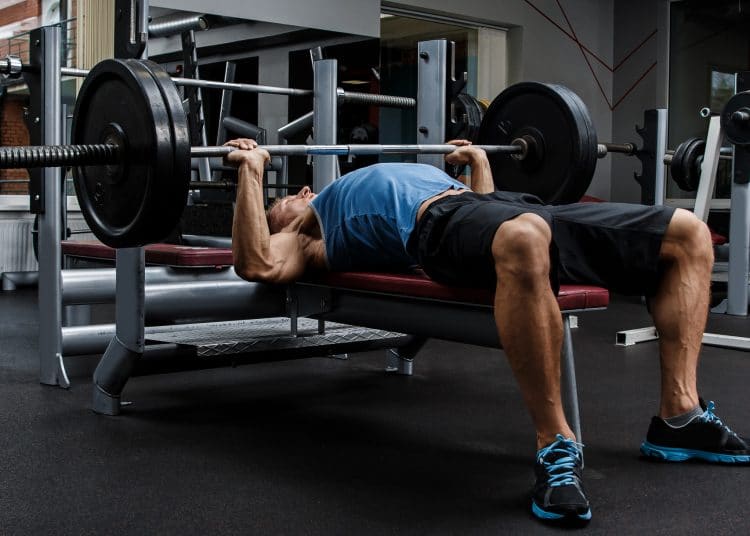

Along with the squat, bench press, and deadlift, there are accessory and optional exercises to perform.
To ensure that the program is individualized and aligns with your goals as closely as possible, you will need to select your preferred exercises.
There are three categories of upper body exercises. You will select one upper body accessory from each category.
The categories and exercise are as follows:
Back (Horizontal)
- Barbell Row
- Dumbbell Row
- Machine Row
Back (Vertical)
Shoulders
- Lateral Dumbbell Raises
- Military Press
- Seated Dumbbell Shoulder Press
- Standing Overhead Press
There are no lower body accessories to perform. The reason for this is that the squat and deadlift already place substantial demand on the body and, therefore, additional lower body work is not required (3).
As well as selecting accessories, there are also some optional exercises to choose from. There are both upper and lower body optional exercises.
Let’s firstly look at the upper body optionals:
- Bicep Curl (Arms)
- Hammer Curl (Arms)
- Incline Fly (Chest)
- Lateral Dumbbell Raise (Shoulders)
- Preacher Curl (Arms)
- Unilateral Tricep Extension (Arms)
When it comes to optional lower body exercises, there are two categories from which to choose – “hypertrophy” and “explosive”.
Hypertrophy:
- Calf Raise
- Glute Isolations
- Leg Curl
Leg Extension - Unilateral Leg Curl
- Unilateral Leg Press
Explosive:
- Box Jumps
- Explosive Unilateral Press
- Deep Squat Jumps
- Jump Squats
- Med Ball Throws
- Power Cleans
- Unilateral Box Jumps
Candito recommends that powerlifters and bodybuilders focus on exercises from the hypertrophy category while athletes or those in sport focus on the explosive category.
That said, if you wish to select exercises from both categories, you can do so.
Candito does not define a rep range for optional exercises in his program.
For hypertrophy and upper body optionals, focus using a moderate weight and a rep range of six to twelve.
With the explosive optionals, due to the high amounts of force associated with many of the exercises, stick to sets of four reps.
While the optional exercises may be beneficial for you, remember that they are not compulsory.
If you do choose to perform the optional exercises, ensure that they are performed after the primary and accessory lifts.
Candito Beginner Linear Periodization (LP)
To make things easy for you, here is the spreadsheet needed for the Beginner Linear Periodization program.
Candito Six Week Strength Spreadsheet
This beginners program is derived from the aforementioned six-week strength program.
While there are many clear similarities, the difference between the two is that the LP program is more straightforward and offers a greater degree of flexibility which is ideal for beginners.
As touched upon, this program uses linear periodization which is much easier to understand and apply than block periodization.
As with the six-week program, the LP program includes mandatory accessory exercises, and the workouts alternate between upper and lower sessions.
However, unlike the six-week program, the workouts do not change drastically week by week.
The exercises and training volume remains unchanged throughout the program. The only variable that changes is the weight being lifted.
Additionally, while the previous program is six weeks in length, providing progress is still being made, the LP program can be cycled continuously.
As mentioned previously, when creating these programs Candito did not want each program to feel “cookie-cutter”.
Therefore, to ensure that this program encompassed a large variety of goals, there are three variations of this program:
- Strength / Hypertrophy
- Strength / Control
- Strength / Power
The hypertrophy program is for those who wish to improve their muscle size, the control program is for those who want to improve general strength, while the power program is specifically for enhancing athleticism.
All three programs are similar in that they all require you to train four times per week with each program containing two “heavy” workouts per week.
The focus of the other two workouts is determined by the goal outcome.
For example, the hypertrophy plan contains a “hypertrophy lower” and “hypertrophy upper” while the control program has a “control lower” and “control upper” workout.
Additionally, there are some small differences in relation to exercise selection, training focus, and training volumes between the three programs.
With each week, the goal of the lifter is to add additional weight to each lift. Candito recommends adding 5-10lbs per week where possible.
Eventually, the body will adapt to the point where it can comfortably deal with the demands of training, and, consequently, improvements will plateau (4).
Once you reach this stage, you may need to progress onto a more advanced training program.
Candito Single Lift Programs
Hitting a plateau with your strength is a normal part of the process. This is something that experienced lifters will be particularly familiar with.
Make no mistake, training plateaus can be extremely frustrating. However, fear not!
As highlighted, Candito has designed a wide variety of training programs to cater to the needs of many lifters, including advanced lifters.
The following single lift programs have been created to specifically help advanced powerlifters who are struggling to add weight to their lifts.
Each program uses block periodization and high intensities. As a result, these programs are not appropriate for beginner lifters.
As with the six-week program, the single lift programs utilize block periodization. However, be aware that each program differs in terms of length and structure.
Additionally, these are peaking programs and, therefore, should be used in preparation for competition or a new 1RM attempt.
The Candito Deadlift Program
Typically, the advanced deadlift program runs for 10 weeks. However, there is the option of performing an additional phase which would extend the length to 13 weeks in total.
Candito Deadlift Program Spreadsheet
The program can be broken down into the following four blocks:
- Close Variation (3 weeks)
- Distant Variation (3 weeks)
- Optional Bridge / High Volume (3 weeks)
- Competition Peak (4 weeks)
With each phase of the program, you are required to deadlift twice per week.
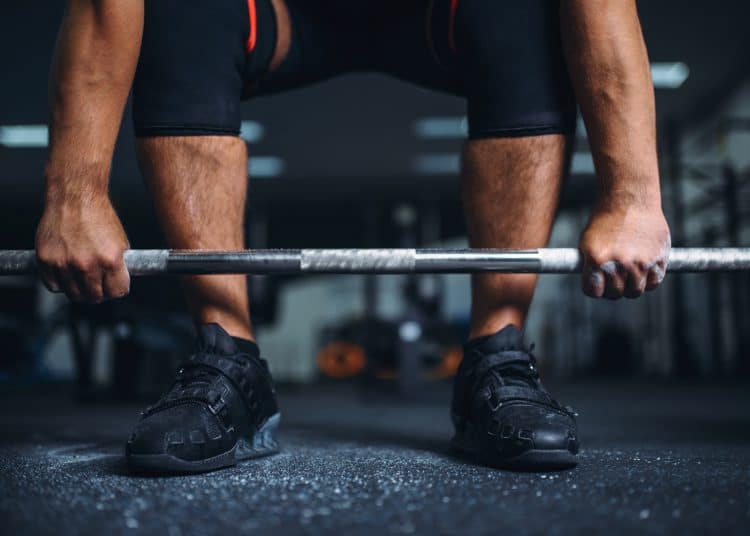

As you may have gathered from the names, phases one and two focus on the conventional (close) deadlift and the sumo (distant) variation respectively.
Phase three is the optional phase. This phase should be performed if you are finding that progress is slow, however, if you are making significant improvements you can advance immediately to the final phase.
In the final phase, the goal is to peak your performance with the deadlift. This is done by gradually increasing the intensity and reducing the training volume.
You must also select one accessory exercise for each phase of the program:
- Beltless Deadlift
- Paused Deadlift
- Beltless Paused Deadlift
- Added Resistance Deadlift (bands or chains)
- Deficit Deadlift
- Snatch-Grip Stiff Leg Deadlift
- Wide-Stance Snatch Grip Deadlift
- Moderate Stance Snatch Grip Deadlift
- Stiff Leg Deadlift
- Sumo Stiff Leg Deadlift
- Wide Stance Good Morning
- Narrow Stance Good Morning
- Low Block Pull
- Narrow Sumo Deadlift
- Conventional Stance Deficit Deadlift
- Conventional Stiff Leg Deadlift
Related: Three Deadlift Workout Programs To Enhance Strength and Performance
The Candito Squat Program
The advanced squat program is 9 weeks in length and is very dissimilar to the deadlift program.
Candito Squat Program Spreadsheet
Before commencing the program, you must define your goal 1RM for the squat as this value will be used in programming from the fourth week.
There are five phases of the squat program:
- High Frequency (3 weeks)
- High Volume / Reduced Frequency (2 weeks)
- 5RM Transition (1 week)
- Max Strength Phase (2 weeks)
- Max Out Week (1 week)
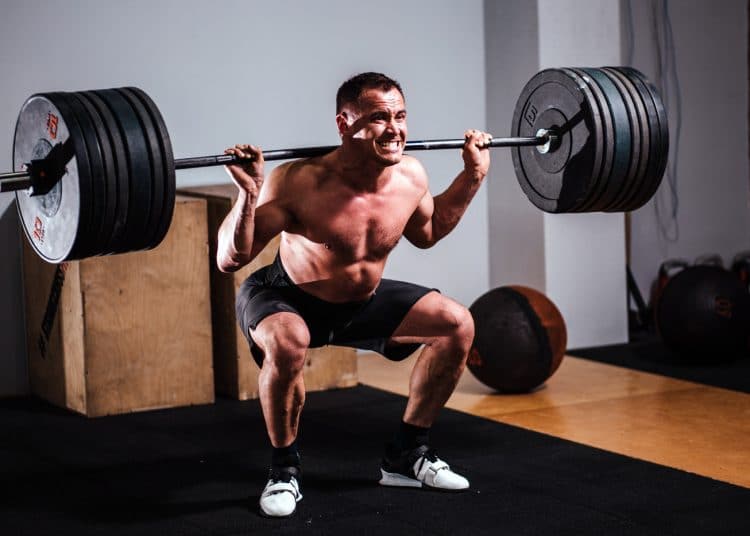

As to be expected with “high frequency”, in the first three weeks you will train five times per week at a high volume.
The second phase sees a drastic cut in frequency from five sessions to two, however, the volumes used in both sessions are very high.
As you move into phases three and four, the focus shifts to heavier lifting with less volume. With each week of this phase, the intensity gradually increases in order to prepare you for the final phase.
In the “Max Out Week”, you are to perform a strength test to assess your progress and give you an idea of the weight to aim for in competition.
In terms of accessory work, there are two accessory exercises programmed into the training plan.
For the first accessory exercise you must choose either pin squats or box squats, however, the second accessory is chosen for you – pause squats.
There are also open accessory slots where you have the option to choose your own accessories.
Candito recommends you choose from the following exercises:
- Hip Thrust
- Leg Curl
- Leg Extension
- Lunge
- Seated Hip Abduction
- Seated Hip Adduction
Also check enhancing squat performance with Smolov Squat program
The Candito Bench Program
If you look closely, you’ll notice that there are similarities between the advanced bench and squat programs. The reason for this is that the squat program is derived from the bench program.
Candito Bench Program Spreadsheet
This program is only six weeks in length and runs through the following four phases:
- Maximum Fatigue Phase (3 weeks)
- High Volume & Full Recovery Phase (1 week)
- High-Intensity Peak Set Phase (1 week)
- Max Out Phase (1 week)
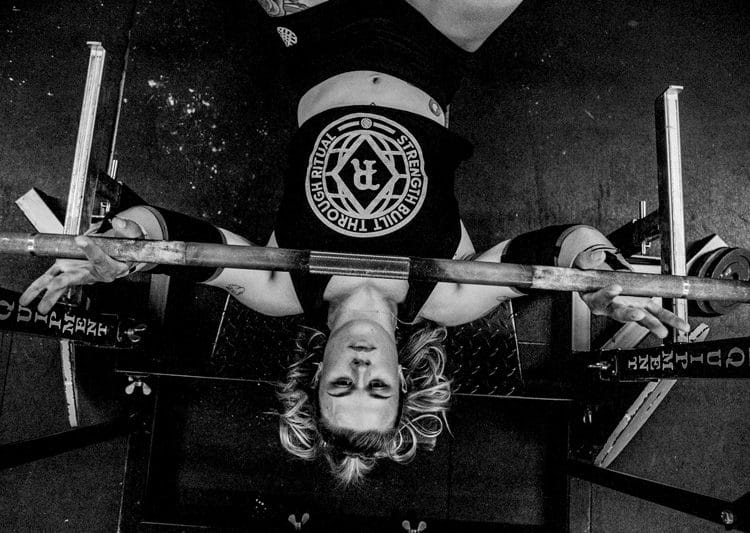

During the first three weeks of the program, the goal is to build as much fatigue as possible. This is primarily done through a high training frequency as you begin with five sessions per week.
Furthermore, performing such a great amount of volume will also allow the lifter to work on any weak points or imbalances and refine their technique.
As you move into “High Volume & Full Recovery”, training frequency drops down to just two sessions per week.
However, training volume and intensity increase at this point and you’ll spend a greater amount of time benching.
In the “High-Intensity Peak” phase, the intensity continues to increase and you will attempt to set a new 5-rep max.
The final week builds up to a 1RM max test that will allow you to evaluate your progress ahead of the competition.
For this program, you must select two accessories in total. Select one exercise from each category:
Accessory 1
- Close Grip Bench Press
- Slingshot Bench Press
- Spoto Press
- Wide Grip Bench Press
Accessory 2
- Incline Bench Press
- Push Press
- Seated Barbell Press
- Standing Barbell Overhead Press
As with the squat program, there are also open accessory slots that need to be filled.
Candito recommends that you focus on isolation exercises such as:
- Chest Fly
- Front Raise
- Lateral Raise
- Rear Delt Fly
Also read powerlifting bench pyramid program
Final Word
The biggest drawback of using online training programs and templates is that the majority of them are not individualized to the lifter.
However, the benefit of using Candito training programs is that, not only are there a wide variety of programs to choose from, they are customizable to suit the lifter’s goals, limitations, and preferences.
The six-week program, beginners LP program, and single lift programs outlined in this article demonstrate this perfectly.
References:
1 – https://pubmed.ncbi.nlm.nih.gov/21499134/
2 – https://www.ncbi.nlm.nih.gov/pmc/articles/PMC3438871/

